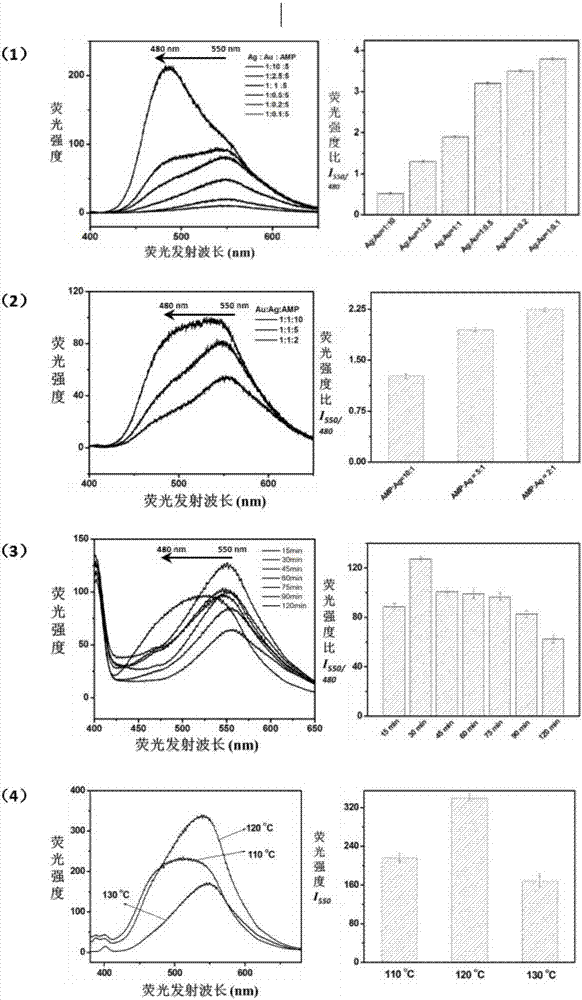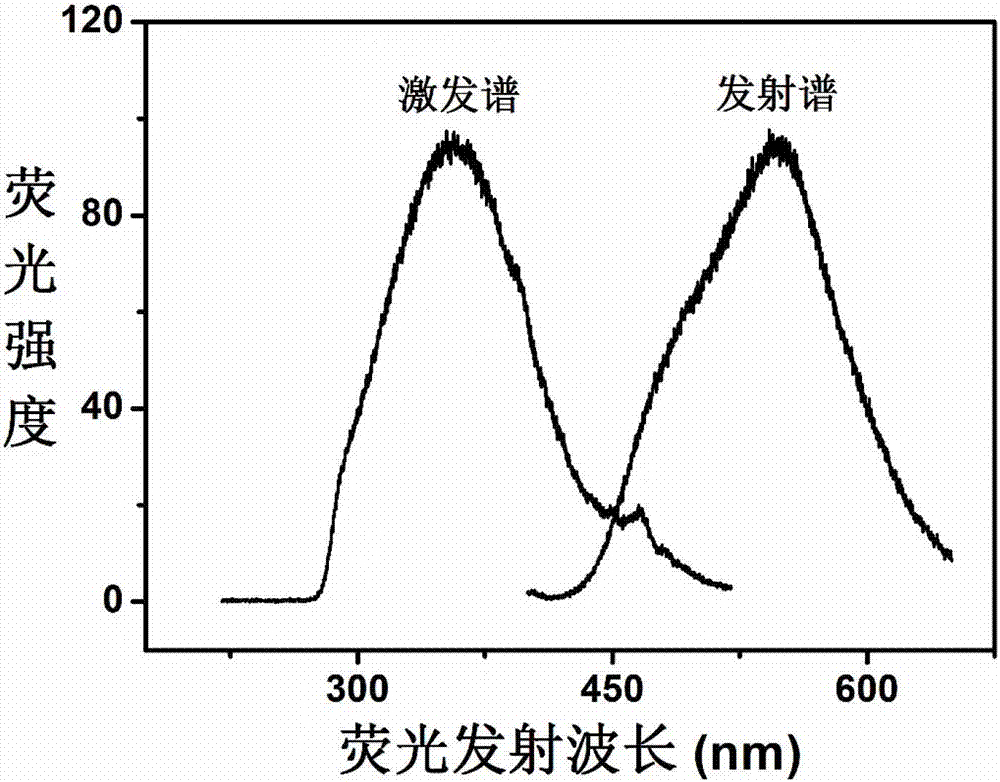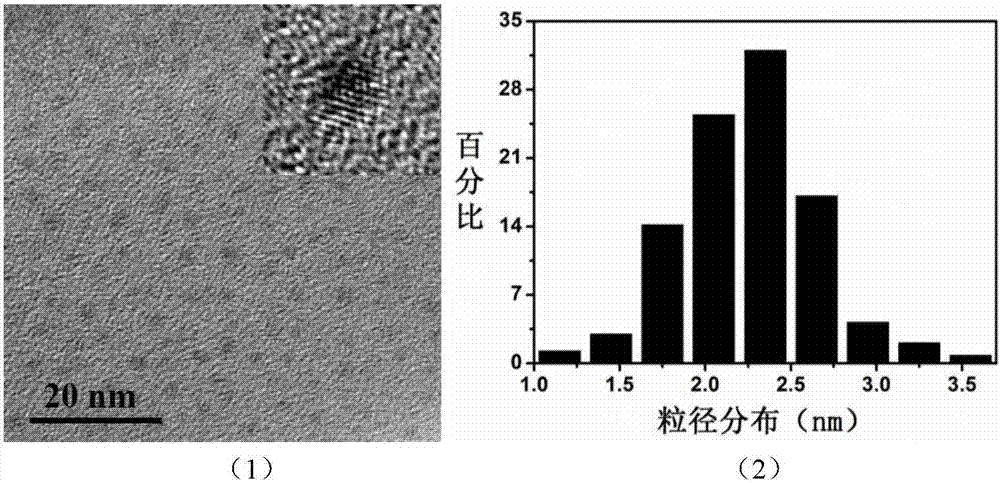Hydrothermal method synthesized photosensitive gold-silver alloy nanocluster adopting micromolecular adenosine monophosphate as protection ligand
A technology of adenosine monophosphate and gold-silver alloy, which is applied in the field of gold-silver alloy nanocluster preparation, can solve problems such as limiting the application of nanoclusters, and achieve unique photosensitivity, simple preparation procedures, and uniform sample particle size
- Summary
- Abstract
- Description
- Claims
- Application Information
AI Technical Summary
Problems solved by technology
Method used
Image
Examples
Embodiment 1
[0023] In the process of synthesizing the gold-silver alloy protected by AMP, because sodium citrate is used as reducing agent and there is a large excess, so this item is not included in the optimization of its synthesis conditions. First optimize the synthesis time, keep the ratio of gold, silver and AMP at 1:1:5, respectively 1, 1 and 5mM, hydrothermal synthesis at 120°C, heating 15, 30, 45, 60, 75, 90, 105 and 120 respectively minute. Such as figure 1 As shown in (3), the optimal synthesis time is 30 minutes. Secondly, optimize the ratio of AMP to metal ions, keep the gold-silver ratio of 1:1 as 1mM; adjust the different concentrations of AMP to 2, 5 and 10mM respectively; hydrothermal synthesis at 120°C for 30 minutes. Such as figure 1As shown in (2), if the ligand concentration is too high (>10mM), the emission peak appears at 480nm, which is not conducive to the formation of gold-silver alloy nanoclusters; then the optimal concentration of AMP is 5 times the equivale...
Embodiment 2
[0028] Take 1 mg of the purified gold-silver alloy nanoclusters in Example 1 and dissolve them in 10 ml of aqueous solution with a concentration of 0.1 mg / mL. Take 300 microliters of the above solution and add 700 microliters of deionized water to test the fluorescence spectrum. The test conditions are: optical path slit 5-5, excitation wavelength 354nm, light source: 150W xenon lamp, scanning range 380-680nm, 1cm×1cm 1mL quartz ratio color dish. Such as figure 2 In the excitation spectrum, the optimal excitation wavelength of alloy nanoclusters is determined to be 354nm. The optimal excitation wavelength is used to excite the nanoclusters, and the optimal emission wavelength is 550nm to emit orange light, and the difference between the two, namely the Stokes shift, is 200nm.
Embodiment 3
[0030] Take 10 microliters of 0.1 mg / mL alloy nanoclusters in Example 2, drop them on the micro-grid ultra-thin copper grid, and after standing still for 10 minutes, use filter paper to blot the surrounding solution. After repeating 2 times, let it dry naturally, and test the transmission electron microscope after 12 hours. Such as image 3 As shown in (1): Au / AgNCs@AMP is highly monodisperse and has clear lattice fringes; its lattice spacing is 0.21 nm, which corresponds to the distance between the 111 lattice planes on the face center of a gold atom cube, This shows that the nanoparticles do contain regular metal nanocrystals. In addition, if image 3 As shown in (2), through the statistical analysis of more than 300 particle sizes, it is finally obtained that their average diameter is about 2.05nm, and the particle size distribution of most particles is between 1.95-2.45nm.
PUM
 Login to View More
Login to View More Abstract
Description
Claims
Application Information
 Login to View More
Login to View More - R&D
- Intellectual Property
- Life Sciences
- Materials
- Tech Scout
- Unparalleled Data Quality
- Higher Quality Content
- 60% Fewer Hallucinations
Browse by: Latest US Patents, China's latest patents, Technical Efficacy Thesaurus, Application Domain, Technology Topic, Popular Technical Reports.
© 2025 PatSnap. All rights reserved.Legal|Privacy policy|Modern Slavery Act Transparency Statement|Sitemap|About US| Contact US: help@patsnap.com



